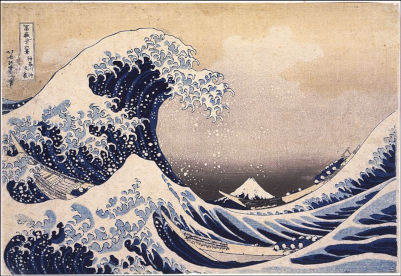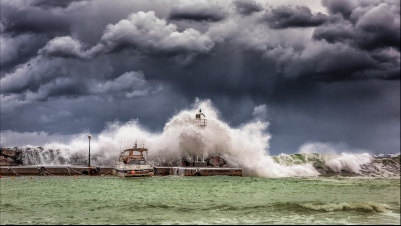Giant waves are feared since many generations, especially in eastern Asia where most Tsunamis emerge along the Circum-Pacific rim. From the perspective of a common fisherman a Tsunami must have been quite a paradox phenomena. They were setting sail early in the morning only to find the whole village destroyed upon their return even tough on the sea they didn’t notice anything unusual. This is where the term “Tsunami” ,literally “harbour wave” from Japanese, originates.

Today we are able to explain this fascinating yet perilous phenomena thanks to modern science and measuring technology. The vast majority of Tsunamis are caused by seismic activity. During a submarine earthquake continental plates move abruptly which leads to water displacement and accordingly to vertical movement of the overlying water. If the earthquake is strong enough this process of water displacement now generates the tsunami. Starting from the location of the seismic activity the wave now spreads circularly and at first surprisingly unspectacular. On the open sea a tsunami usually reaches a huge wave length of more than 100 kilometres but only a small height of maximum 1 metre which is why it often passes without being noticed by fisherman.
Other possible causes of those natural disasters are landslides and meteorites. In fact the largest Tsunamis ever recorded have been caused by landslides not by earthquakes. In 1958 the Lituya Bay fjord in Alaska was the scene of a 524 metre high wave caused by a collapsing hillside. That exceeded the borders of what was previously thought possible but luckily the casualties were quite low since the wave couldn’t leave the bay. However the water displacement of landslides is usually not sufficient to cause the same transoceanic waves as earthquakes do which means they typically occur in narrow bays or lakes. The third and most rare origin of Tsunamis is the impact of a meteorite in the sea.

Transoceanic tsunamis travel with speeds of up to 800 kilometres per hour without loosing energy which consequently enables them to cross whole oceans and to affect several continents. When a tsunami approaches the shore its height constantly increases as the sea becomes more shallow. Here lies the difference to usual waves caused by wind or the tides. The typical seismic sea waves reach heights of 10 to 30 metres when they hit the shore. At first glance this may not sound that impressive but Tsunamis carry huge volumes of water and thus an enormous amount of energy which is especially devastating in flat areas where the water can flood many kilometres up-country. It is important to know that the first wave is usually followed by one or two other waves which means possible survivors are not out of danger yet. In the area of the Circum-Pacific rim the Pacific Tsunami Warning System supervises the seismic activity in order to predict Tsunamis and to be able to warn the population in time.
Sources:
https://www.nationalgeographic.com/environment/article/tsunamis
https://en.wikipedia.org/wiki/Tsunami
https://en.wikipedia.org/wiki/1958_Lituya_Bay_earthquake_and_megatsunami

